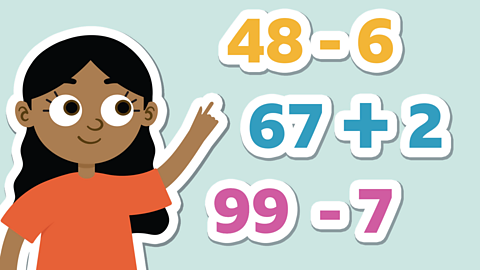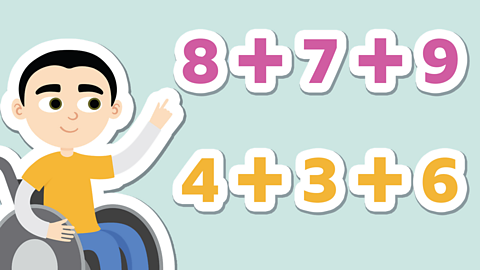Watch: Counting in 25s
Watch this video where Mr McPartlin explains how you can count up and down in steps of 25.
How do you count in 25s?
There are two 25s in 50 and four 25s in 100.
If you remember this, it helps a lot when counting in steps of 25.
Take a look at this number line:

With every step of 25 there is a bigger step of 50. Within each hundred there are four steps of 25.
Multiples of 25 end in 25, 50, 75 or 00.
Counting up in 25s always follows that order.
Example 1
What are the missing numbers in this sequence?
225 → ? → 275 → 300 → ?
When you count in 25s, the numbers always follow the same sequence - 25, 50, 75, 00.
So the missing numbers are:
225 → 250 → 275 → 300 → 325
Example 2
Wigglesworth Academy has 25 children in each class. How many children are in 7 classes?
A number line could help you solve this.
The number line shows that 7 steps of 25 is 175. You could also write this as 7 lots of 25.
As a multiplication, that would be:
25 x 7 = 175
There are 175 children in 7 classes of 25 children.
Example 3
Which number in this sequence is the odd one out?
450 → 475 → 490 → 525 → 550
Remember these tips for counting in 25s:
- They always follow the same order.
- The tens and ones are always either 25, 50, 75 or 00.
Can you now spot the number that is the odd one out?
It’s 490!
Its tens and ones are not 25, 50 75 or 00 and it breaks the pattern of counting in 25s.
The next number that should have followed 475 is 500.
450 → 475 → 500 → 525 → 550
Activity
NEW! Play Guardians: Defenders of Mathematica - the Halloween update. gameNEW! Play Guardians: Defenders of Mathematica - the Halloween update
Experience Mathematica as you’ve never seen it before, with all-new backgrounds and costumes for Halloween. Available for a limited time only. Use your maths skills to save the day before it's too late!

More on Adding and subtracting
Find out more by working through a topic
- count7 of 23

- count8 of 23

- count10 of 23
